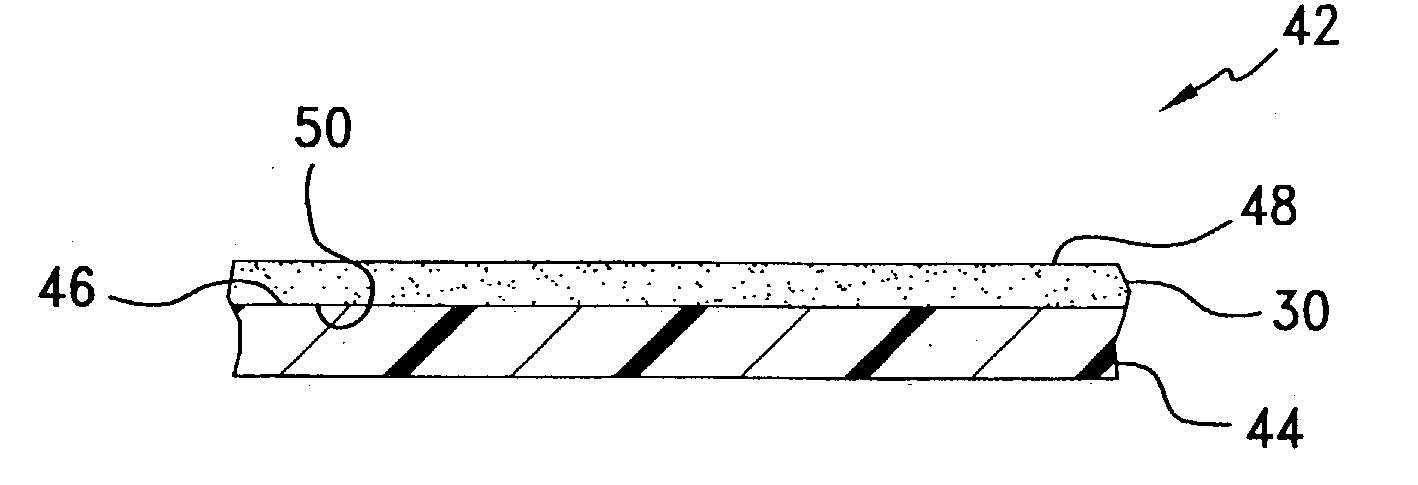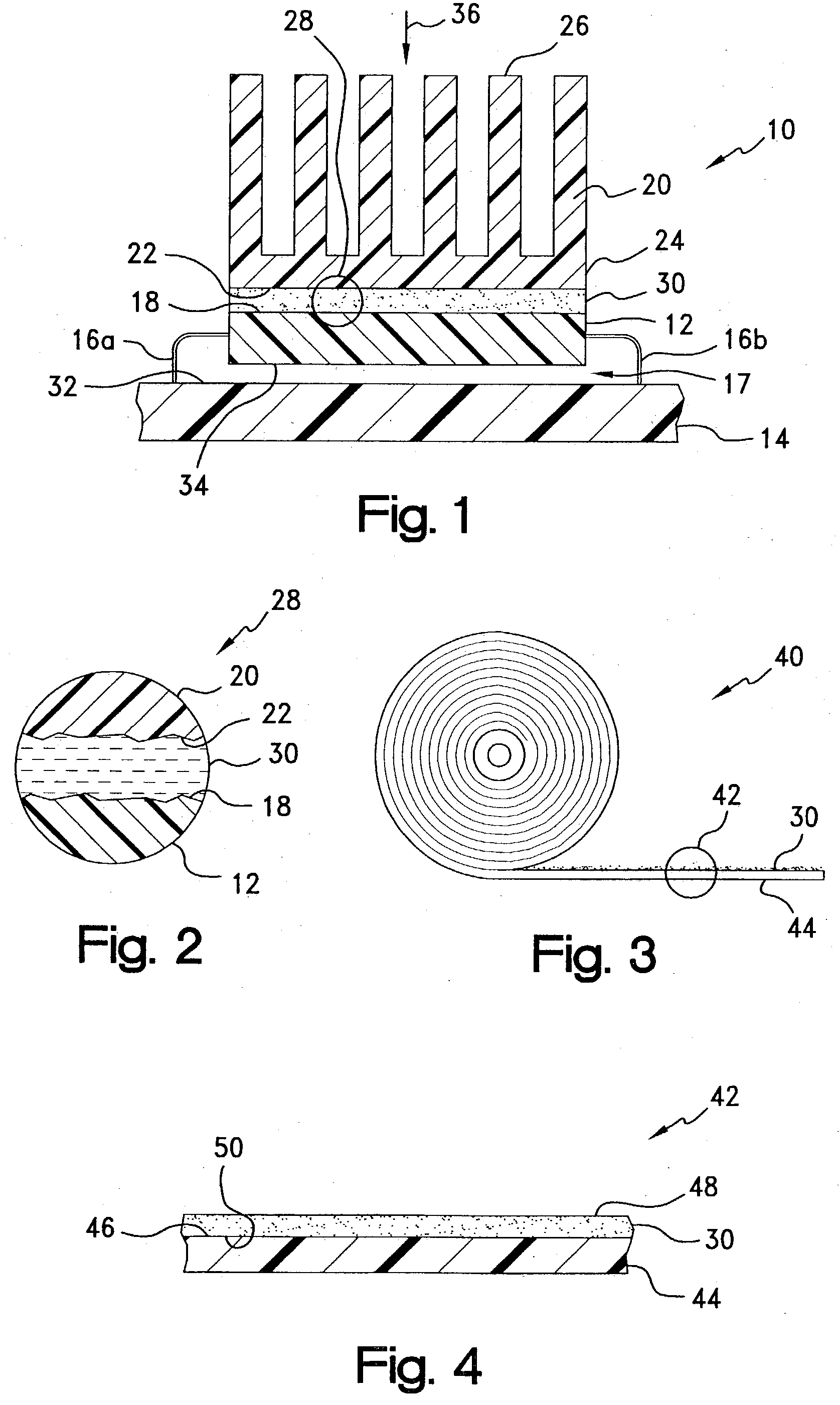Conformal thermal interface material for electronic components
a technology of thermal interface material and electronic components, which is applied in the direction of chemistry apparatus and processes, semiconductor/solid-state device details, televisions, radios, etc., can solve the problems of increasing complexity of design, increasing the size of devices, and increasing the complexity of circuit designs for modern electronic devices such as televisions, radios, etc., to facilitate the dispensing of films
- Summary
- Abstract
- Description
- Claims
- Application Information
AI Technical Summary
Benefits of technology
Problems solved by technology
Method used
Image
Examples
Embodiment Construction
[0055] Master batches representative of the interlayer formulations of the present invention were compounded for characterization according to the following schedule:
3TABLE 3 Representative Interlayer Formulations Ultraflex .RTM. Sample Vybar .RTM. 260.sup.1 H600.sup.2 Amber.sup.3 Filler (wt. %) No. (wt. %) (wt. %) (wt. %) BN.sup.4 ZnO.sub.2.sup.5 Al.sup.6 3-1 45 2233 3-2 47 1736 3-3 47 17 6 30 3-640 60 3-7 40 19 41 3-8 50 25 25 3-10 34 16 50 5-167 33 .sup.1.alpha.-olefinic thermoplastic, Petrolite Corp., Tulsa, OK .sup.2acrylic PSA, Heartland Adhesives, Germantown, WI .sup.3paraffinic wax, Bareco Products Corp. Rock Hill, SC .sup.4Boron nitride, HCP particle grade, Advanced Ceramics, Cleveland, OH .sup.5Zinc oxide, Midwest Zinc, Chicago, II; Wittaker, Clark & Daniels, Inc., S. Plainfield, NJ .sup.6Alumina, R1298, Alcan Aluminum, Union, NJ
[0056] The Samples were thinned to about 30-70% total solids with toluene or xylene, cast, and then dried to a film thickness of from about 2.5 to...
PUM
| Property | Measurement | Unit |
|---|---|---|
| viscosity | aaaaa | aaaaa |
| temperature | aaaaa | aaaaa |
| viscosity | aaaaa | aaaaa |
Abstract
Description
Claims
Application Information
 Login to View More
Login to View More - R&D
- Intellectual Property
- Life Sciences
- Materials
- Tech Scout
- Unparalleled Data Quality
- Higher Quality Content
- 60% Fewer Hallucinations
Browse by: Latest US Patents, China's latest patents, Technical Efficacy Thesaurus, Application Domain, Technology Topic, Popular Technical Reports.
© 2025 PatSnap. All rights reserved.Legal|Privacy policy|Modern Slavery Act Transparency Statement|Sitemap|About US| Contact US: help@patsnap.com


